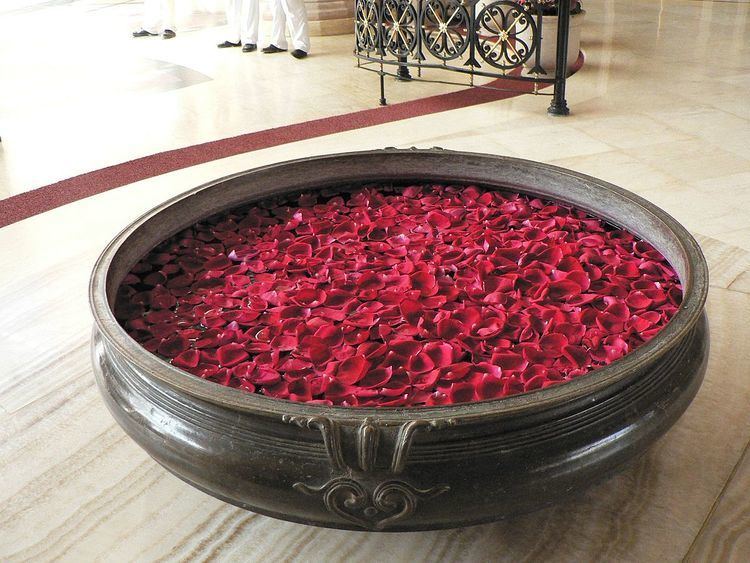 | ||
Scented water, odoriferous water or sweet water, is a water with a sweet aromatic smell. It is made of flowers or herbs and is the precursor of the modern day perfume. Scented waters are also used in making other products such as pomanders and body care products.
Contents
Ingredients
Some of the flowers and herbs used to make scented water are:
Hygiene
In Medieval times a scented water was used for hygiene by a person washing their hands with it before meals, since many meals were forkless. The wealthy of Medieval times had their linen clothes boiled in scented water. Varahamihira (6th century) was using scented water to clean his toothbrushes. Just prior to Marie Antoinette's execution in 1793 one of her servants was able to smuggle her some minimal need requests, one being some scented water for her teeth.
Medical
Hippocrates mentions scented water in his medical practice:
Washing waters
Boccaccio in his Decameron mentions scented washing waters:
Refreshment
It was a custom in the Roman Empire for amphitheatres to be furnished with scented water jet fountain sprays for refreshing the spectators. The overhead awning (velarium) shielding the spectators for the Colosseum was saturated with scented water for dripping fragrant water on spectators' heads to keep them cool.
Perfume
Henry Percy, 6th Earl of Northumberland in 1511-12 had various scented waters made for him, which consisted of his usage of over a gallon each week for the year. In the 1571 estate inventory of John Brodocke, an apothecary in Southampton, lists 32 types of scented water that he had as some of the items in his shop. In 17th century Constantinople the Venetians and Genoese had apothecary shops that had merchants of scented water including rose water. Scented waters were still being used into the 19th century of the wealthy nobles in Egypt as a type of perfume. It was an Egyptian custom then to sprinkle guests with rose water or orange-flower water after dinner just before they were to go home.
Even though it is said by scholars that the art of perfumery has it roots in antiquity, the city of Montpellier has self established itself as the birthplace of perfumery. In the 18th century they honored guests of the city with scented water and other 'gifts of fragrance'. There are even perfume manuals that describe Montpellier perfumes as being "a la mode de Montpellier" because of extra ingredients used that enhance their fragrances.
Cooking
Scented rose water is and has been used from time to time for cooking and flavoring foods in various recipes. Rose water is used in Greek cuisine.
Sensual
In Medieval times scented water was used for sensual pleasures.
Religious
In Medieval times scented water was used at baptisms.
Rose water
Mary Hooper in her book called Petals in the Ashes about the Great Fire of 1666 explains that the first step in making "rose water" is to gather together 3 or 4 full roses. These roses should not have been treated in any way with toxic pesticide for obvious reasons. One is to then take a pint of water and put into a saucepan. Then heat the water with the roses in it gently, not allowing it to boil. You are to cook the rose petals until they become transparent. After that happens, allow the cooked rose water to cool. Then drain through a sieve forcing the water to go through the rose petals. The resulting "rose water" is to be refrigerated. The scented water then is used as a cooling agent on the body as well as the face.
Scented bath water
Hooper explains that scented water to bathe in can be made of dried herbs. She explains the idea of making such a scented water is to put 8 tablespoons of dried herbs in a pan of 1 pint of water and simmer for 10 minutes. This water then is to be allowed to cooled. Then it is to be strained to remove all the herb pieces. For the actual bath then a quarter of this scented water is to be put into your bath, highlighted with fresh flower petals on top of the bath water. She explains roses and lovage have a cleansing and deodorising effect. For a refreshing effect she recommends to use rosemary and hyssop. For a relaxing effect to use lime flowers and lavender. For a soothing effect use chamomile and lemon balm.
